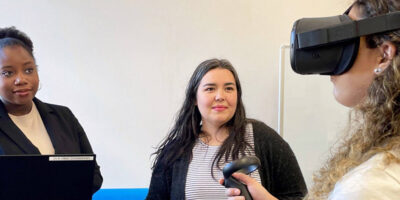Plan, track, and demonstrate
the impact of your work





Translational Science Benefits
The Translational Science Benefits Model is a framework designed to help public health and clinical scientists demonstrate the impact of their work in the real world. The model identifies 30 benefits of clinical and translational science in four domains: Clinical, Community, Economic, and Policy.
What is the TSBM?
Translating for Impact Toolkit
Apply the TSBM Model to your own work
Create Toolkit Account
Save your work, keep track, and share progress with your colleagues.
News & Events

TSBM & KL2 scholars partner to develop four impact case studies
In spring 2024, the TSBM project team partnered with the KL2 Career Development Program at the Institute of Clinical and Translational Sciences (ICTS) to develop…

Staff attend the ACTS conference in Las Vegas
Anna La Manna and Mia LaBrier from our team presented two posters at the recent Association for Clinical & Translational Science (ACTS) conference in Las…

TSBM goes global with new St. Jude project
We’re excited to announce a new partnership between the Center for Public Health Systems Science and St. Jude Global, whose mission is to improve the…
The Tools in Use
Explore our case studies that demonstrate the TSBM in action.

Providing Practice Experiences for School Reintegration (PrESR) to Youth Hospitalized for Suicide-Related Crises
Presenting a new therapy to aid youths hospitalized for suicide attempts transition back into school

Preventing suicide among youth in juvenile detention
Increasing the implementation of evidence-based suicide prevention in juvenile detention centers through the Zero Suicide model.

Paving the Pathway: YOJO, An Online Platform to Facilitate Persistence and Sustainability in Educational and Professional Development Programs
Designing an online platform to support coordination and increase the impact of pathway programs
